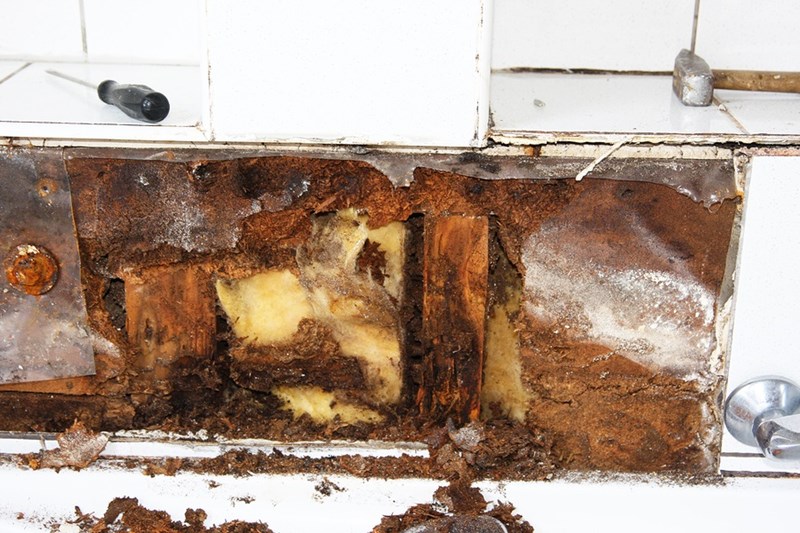In this article below you can locate a lot of quality advice on the subject of How to Fix a Water Damage Bathroom.

The washroom is extremely prone for wet accumulation as well as possible water damages due to the regular use water in it. This write-up provides basic evaluation strategies to aid spotting water damages threats.
The frequent use of water in the washroom makes it extremely susceptible for damp buildup and potential water damage. By checking it consistently, you can reduce water related problems.
The adhering to collection of assessments is very easy to perform and ought to be done when in every 3 months in order to keep your shower room healthy and also to stop possible water damages caused by the bathtub, the shower, pipeline joints and plumbing, sinks, cabinets, and the bathroom
Do not overlook doing these evaluations as well as be complete while executing them. Remember that these straightforward examinations can conserve you a lot of money by providing very early signs for water damages
Sinks and also Cabinets
Sinks and also closets are revealed to wetness and humidity daily and also are often ignored. Examine frequently under the sink as well as on the counter top above it. Repair any drip in the catch as it might recommend drainpipe issues. Take a look around the sink, slow draining pipes may indicate a blocked drainpipe. Change sink seals if they are split or loosened.
Tub and Shower
The shower and bath tub call for special attention and upkeep. Inspect the ceramic tiles and change if split. Make certain that there is no missing grout between the floor tiles. Check as well as replace split caulking at joints where the walls fulfill the floor or the bathtub. Obstructed drains pipes as well as pipes troubles will prevent the bath tub from drying out and also might indicate significant problems under the bath tub. Speak with a professional quickly to avoid architectural damages. Take note of stainings or soft locations around the bathtub wall surfaces as they may show an internal leakage.
Plumbing
Signs for water damage are tough to find because the majority of pipes are installed inside the wall surfaces.
Pay special focus to flooring and also walls dampness and spots as they may show an unnoticeable plumbing trouble. Check dampness levels in adjacent rooms too.
The Toilet
The commode is a susceptible water joint. Examine the water lines and look for leaks around the bathroom seat, in the hose, as well as under the water tank. If you find any indications of dampness on the floor around the commode, check for leakages in the toilet edge and also storage tank seals.
Realize that hanging toilet dish antiperspirants raises the possibilities for obstructions.
Water Damage Signs In The Bathroom To Avoid Cleanup
Musty smell
This is one of the easiest signs to catch because musty smells are so odorous. The damp, earthy, moldy smell should be a big red flag. The smell will develop when moisture gets trapped in surfaces, and begins to facilitate mold growth. Leaking pipes under cabinets, inside walls, and behind shower fixtures will cause moisture to stay trapped and not dry, which will lead to mold growth and spread. As soon as you notice any musty smells in your bathroom, have it checked for hidden water damage and cleanup signs.
Visible mold
If the smell isn’t there to give it away, sometimes you will actually see mold growth. Finding mold in your bathroom is a serious problem, because mold is very harmful to your health. By the time mold growth is visible, it also means that water damage has already occurred and been present for some time. The only way the mold problem can be resolved is to find the source of the moisture and get it stopped. To safely and adequately remove mold, you need to have professionals handle the remediation. Do not waste any time in getting mold problems addressed, fixed, and sanitized so that you can protect you and your family from the many respiratory symptoms caused by mold exposure.
Damaged floors
Bathroom floors should be able to withstand some exposure to water while still remaining in good condition. However, when excess exposure or water leaks occur, they will begin to damage even the most water-resistant flooring. If you notice any cracking, bubbling, staining, or warping on your bathroom floors, there is probably a water leak somewhere causing the distortion. If you notice areas of the floor have become softer, or even have a spongy feeling, there is probably damage to the subfloor. Subflooring is typically made up of plywood. When plywood is exposed to water or moisture, it will absorb it. Once it has become saturated, the weight of the excess water will cause the wood to swell and soften. Check the floors in your bathroom frequently to catch any of these sings before they lead to damaged subflooring.
Changes on walls
When water leaks behind walls, it will cause changes in the drywall. Peeling plaster, blistering paint, and soggy wallpaper are all good indicators that excess water is building up behind the wall. Water leaking behind drywall will cause it to swell and be soft to the tough. If you start to notice gaps along the trim of your walls, or where tile meets the wall, it could also be a strong indicator that there is a leak behind the wall. Any changes, distortion, or damage on the walls should be evaluated as soon as you notice it to prevent further water damage and cleanup.

Do you like more info about How to Repair and Prevent Bathroom Water Damage? Create a comment below. We'd be delighted to know your insights about this blog entry. In hopes that you come back again before long. Sharing is caring. Who knows, you might be helping someone out. Thanks a lot for taking the time to read it.
Apply Now